I first encountered this species on a bike ride, in the form of a roadkill corpse. What was left looked maybe interesting enough to take home and put under a stereo scope, so I did that. It turned out that "interesting" was a bit of an understatement, so I went back and collected some fresh specimens, which turned out to be even more interesting.
Here's the first thing that caught my attention: compound claws.
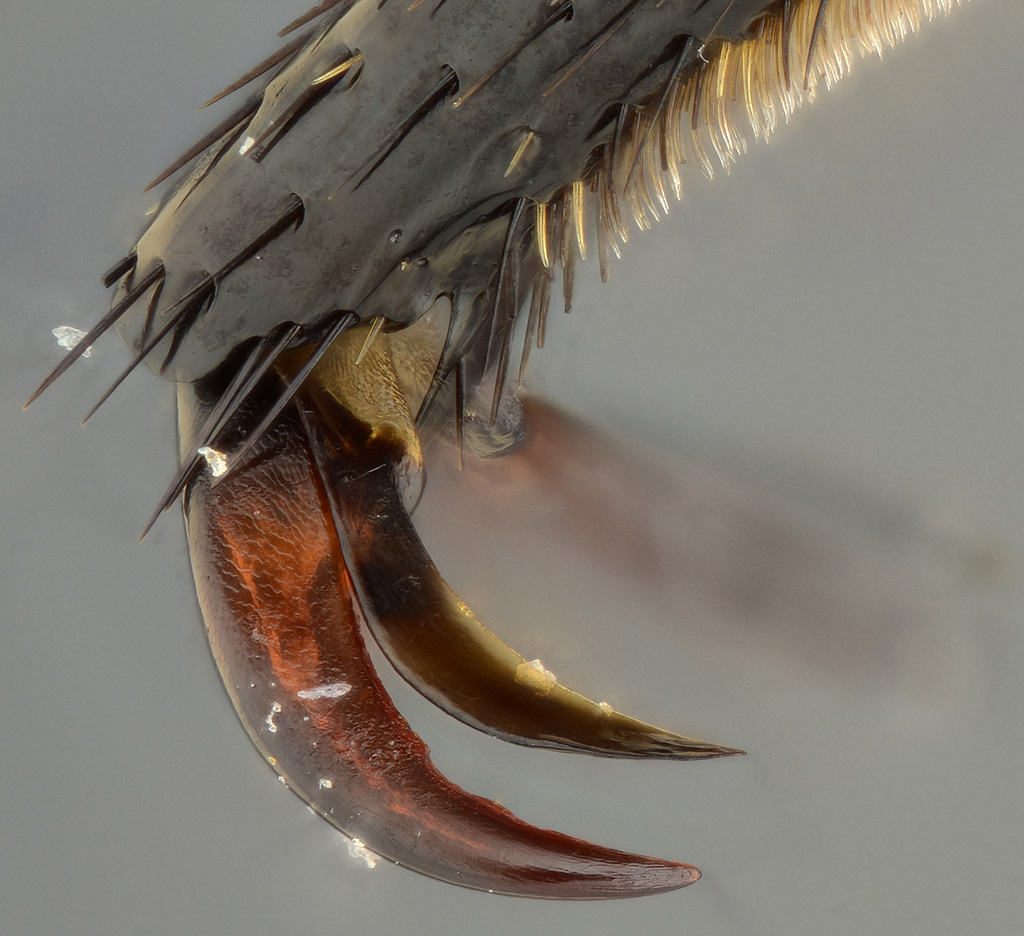
Each foot has two ordinary claws. Then on the outside of each ordinary claw, there's an auxiliary structure that seems to be called a "blade". To my eye, looking at the live specimens that I collected later, the blades appear to be independently actuated. I have no idea what they use the blades for.
For people who can see stereo, here's the everything-in-focus version.
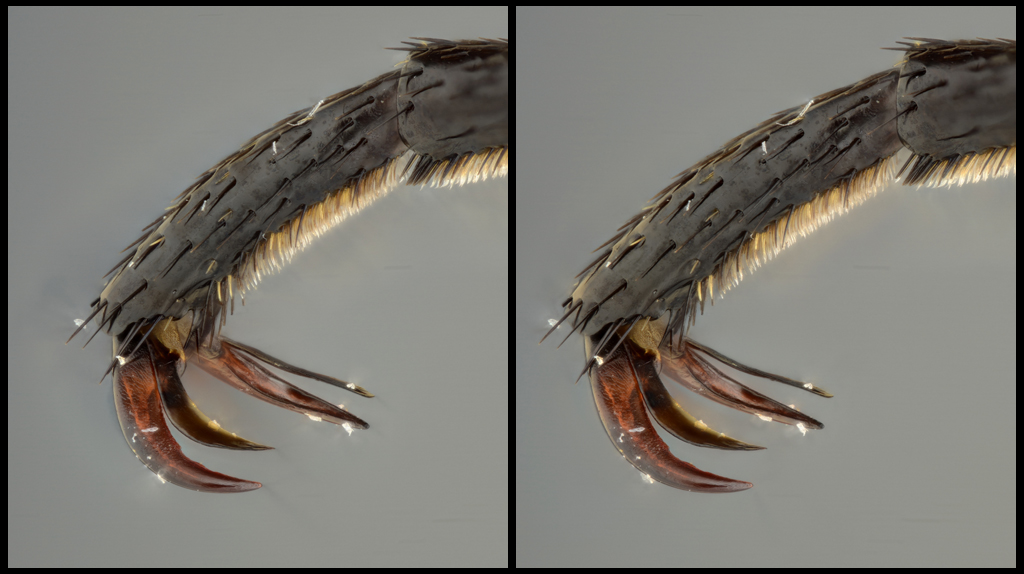
One peculiarity of the everything-in-focus version is that if you look at it not in stereo, it's very easy to misinterpret the structure. At least I get it wrong. Instead of seeing front/front/back/back with only slight separation between claw and blade, I see front/back/front/back with big things in the front and little things in the back, and large separation in both cases. The same thing happens when I look at Figure 1 of https://aces.nmsu.edu/pubs/_circulars/C ... lcome.html .
Next up, we have what look here like donkey ears. What they actually are is tibial spurs, at the joint between tibia and tarsus. In most of the other critters I see, such spurs are pointed like bristles. Why these things have this thickened and flattened structure, I have no idea.
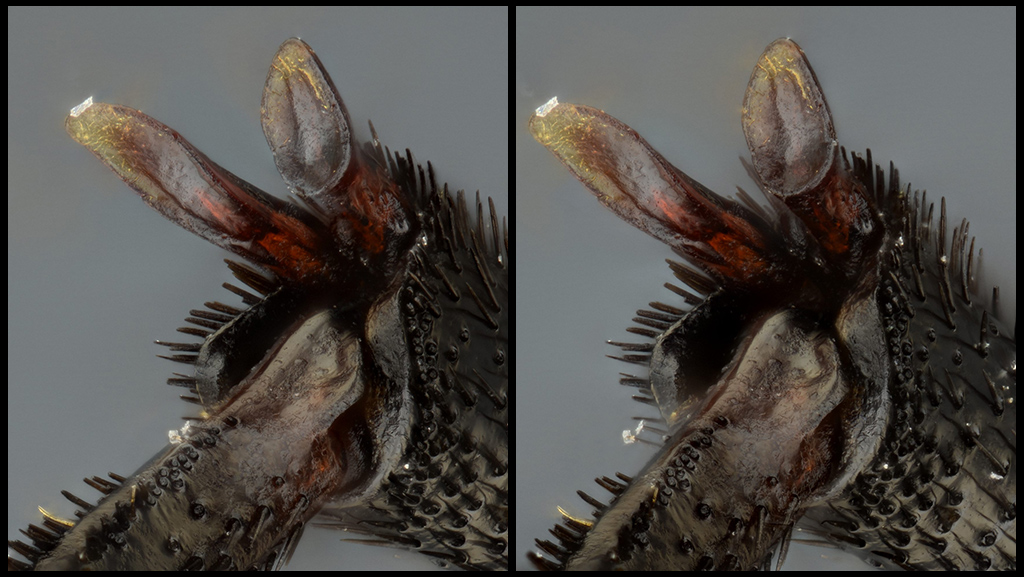
Finally, we have what must be the most frightening male copulatory organ that I personally have ever seen.
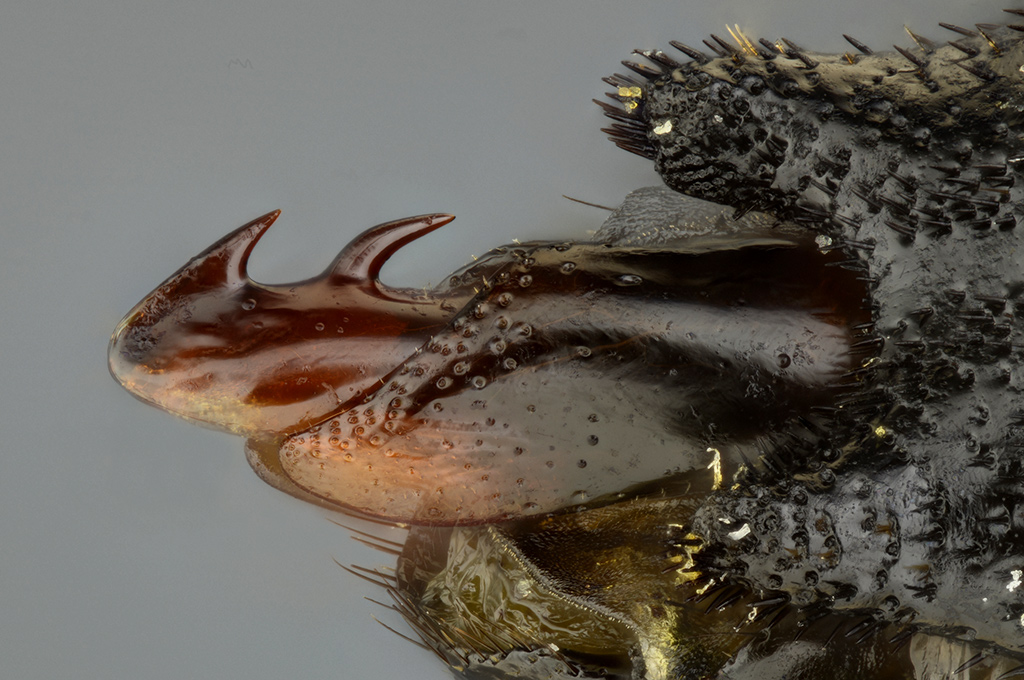
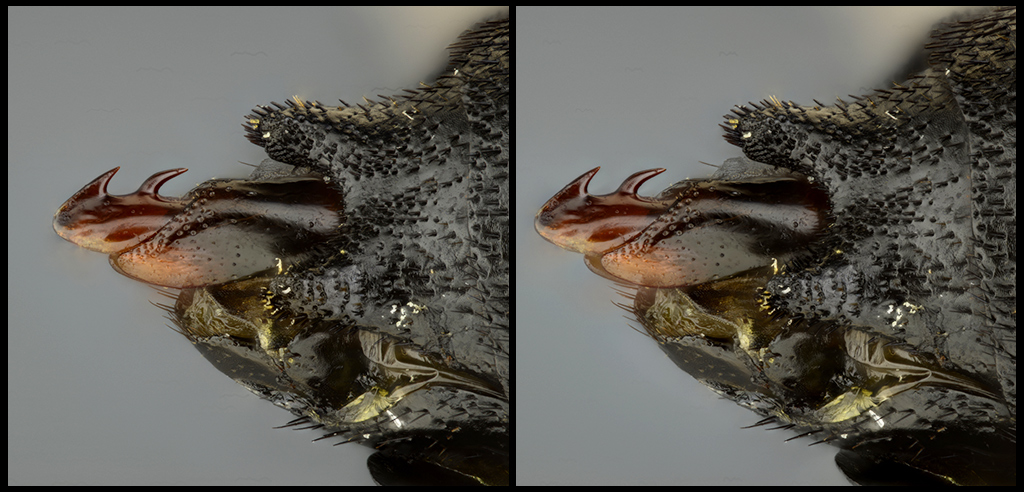
If anybody has knowledge of how this anatomy functions, I would be very interested to hear!
All images shot with Mitutoyo M Plan Apo 10X NA 0.28 objective, Raynox DCR-150 tube lens, and Nikon D800E body. Cropping varies: width on subject about 1.4 mm for the non-stereo view of claws, 0.86 mm for the tibial spurs, 1.9 mm for the non-stereo genitalia, and 2.4 mm for the stereo genitalia. Stepped at 0.005 mm.
Stereo pairs are uniformly plus and minus 5 degrees off axis, with percentage shifts computed using the stereo calculator that is now included in Zerene Stacker (in beta build only, at this moment).
--Rik

